05/23/2014 wat.tv.fr. The United States National Academy of Sciences. CBS News. COM.
Japan: Fukushima: Safety Level NOT SAFE! -
2011-12-27 20:16:26
テーマ:低線量放射線・内部被曝
Japan: Fukushima: Safety Level NOT SAFE! -
http://www.wat.tv/video/japan-fukushima-safety-level-4lrp5_31wod_.html?utm_medium=twitter&utm_source=twitterfeed
Japan: Fukushima: Safety Level NOT SAFE! –December 11, 2011
Following the Fukushima nuclear disaster, the Japanese government raised the level of the allowable
radiation exposure from 1 to 20 mSv per year, even for children.
On April nineteenth, the Ministry of Education, Culture, Sports, Science and Technology, announced the amounts of radiation a child can be exposed to one year is 20 mSv.
Officials proclaimed that 20mSv/year is safe. But is it?
福島原発事故が起きて、日本政府は放射線被ばくの許容レベルを、年1ミリシーベルトから20ミリシーベルトに引き上げ、子どもすらもその対象とした。
4月19日、文科省は、子どもが1年間で浴びてもよい放射線量を20ミリシーベルト(20mSv)とすると発表した。役人たちは年20mSvは安全だと宣言した。 本当にそうなのか?
In this video, we’ll test the official claim ofthe safety against the established radiobiological science, the same science upon which the United States National Academy of Sciences predicts that 20mSv of radiation not only can cause cancers all across Fukushima but would primarily kill women and children.
In this video, we’ll also test the official claim of the safety against recently published research, such as the largest study of nuclear workers ever conducted, comprising over 407, 391 workers from 15 countries.
(注: The 15-Country Collaborative Study of Cancer Risk among Radiation Workers in the Nuclear Industry: Estimates of Radiation-Related Cancer Risks )
The study found increased cancer mortality among nuclear workers exposed to the average of 2mSv/y. That’s just one tenth of the allegedly ‘safe’ 20 mSv/y allowed in Fukushima.
In this video, we’ll see that the public has been misled by the government and major media into the false sense of safety regarding nuclear fallout, obstructing the ability of citizens to be fully informed, so that we can make sound decisions that direct our democracies to safe energy futures.
So stay tuned as we cover all that and more.
この動画で我々は、すでに確立されている放射線医学、すなわち米国の国立科学アカデミーが年20mSvの放射線量は福島全県でガンを発生させるだけでなく、まずは女性とこどもたちを死なせると予想する根拠にしている科学に対抗する日本政府のこの公式の安全基準の主張を検証する。
この動画で、我々はこの日本政府の公式見解が、たとえば15ヶ国の407,391人の原子力関連労働者に対する過去最大調査のような、近年公表された研究と対立する点をも検証する。 この過去最大の調査研究は、平均で年2mSvの被ばくをする原子力関連労働者の間のガン死亡率上昇を見つけた。それは福島で許容されている、安全と言われる年20mSvのわずか10分の1に過ぎない。
この動画で我々は、日本国民が政府と主要メディアに惑わされて十分な情報を得る能力を邪魔され、死の灰に関する偽りのセーフティ感覚を信じ込まされていることを検証し、それにより我々が安全なエネルギーの未来へと我々の民主主義を方向づける健全な決定を行えるようにする。
だから、これらすべてと+アルファの情報を伝える、我々のこの動画から離れずにこのまま見てください
_______________________
The United States National Academy of Sciences is a logical resource to consult about the state’s radiation science. And the academy regularly publishes reports on low-dose radiation risks.
The reports are based on decades of epidemiological and radiaobiological research, from which risk predicting models are built.
全米科学アカデミーは、放射線科学の状況について相談すべき、合理的情報ソースである。そしてアカデミーは、低レベル放射線リスクに関する報告を定期的に発表している。それらの報告は、数十年におよぶ疫学的、放射線生物学的な調査研究に基づいており、そとからリスク予想モデルが構築される。
_______________________
The Academy’s most recent report provides both raw data and instructions so that you can apply their risk models to a wide range of exposure scenarios. We can therefore find the cancer risks of 20 mSv.
全米科学アカデミーも最新の報告は、生のデータと説明があり、我々がそのリスクモデルを広範な被ばくシナリオに当てはめることができる。それゆえ我々は、日本政府が決めた年20mSvのガンリスクを見つけることができる。
This is the Academy’s data table for estimated cancer cases caused by 100 mSv of radiation, stratified by
ages and segregated by ... Highlighted in yellow are the predicted number of cases for all cancers per 100 thousand persons.
Immediately we can see that risk of cancers are uniformly decreases as age increases for both males and females. In other words, children are the most vulnerable to radiation.
これはアカデミーの、年齢と性別で分けた10mSv の被ばくにより引き起こされるガン症状の推定データ表である。黄色の部分は、10万人につき発生するすべてのガンの推定数である。
これを見てすぐにわかることは、ガンリスクは男女ともに年齢が上がるについれ一様に減少するという点である。言い換えれば、子どもたちが放射線に対してもっとも弱い。
_______________
Parting these date yields this graph. This cancer risk graph keeps the shape, irrespective of its dose.
This shape is therefore the face (phase?) of radiation-induced cancer risk across the human life span.
これらのデータを取り出したのが下記のグラフである。 このガンリスクを示すグラフは、放射線量がどうであろうと、この形は変わらない。この形はそれゆえ、人間の年齢に関わらず、放射線影響により起こされるガンリスクの様相を示す。
(100mSvの放射線への被曝で増大する、年齢別ガンリスク:単位10万人)
(*新生女児は10万人につき、約4777人、新生男児は同、2563人)
Following the Academy’s instructions on scaling the model to specific doses, the Y axis is recalibrated to the predicted cancer cases caused by the allegedly ‘safe’ 20mSv. And here in turn recalibrations for 10 and for 2mSv. According to the Academy, there is no harmless dose of radiation. So, obviously 20mSv is not safe.
このモデルの特定線量への応用についてのアカデミーの説明に従い、Y軸の目盛りを、日本政府が安全とする20mSvにより引き起こされるガン発症予想に合わせる。するとここに年10mSv、2mSvの調整モデルができる。
アカデミーによれば、無害な放射線量というものはない。それゆえ、明らかに、20mSvは安全ではない。
(10万人単位:年20mSv) (同10mSvの場合)
(2mSvの場合)
(10万人につき、年2mSvの被ばく場合 * ゼロ歳女児は10万人につき約95.5人、ゼロ歳男児は51.26人)
________________________________
But what’s most remarkable is that children and, most especially, girls, are most at risk of radiation-induced cancer. In fact, girls are almost twice as vulnerable as the same-aged boys. And an five-year-old girl is five times, and an infant female seven times, more vulnerable than a 30-year-old man.
しかし何よりも顕著なことは、子どもたち、特に女の子が、放射線によるガンのリスクが最大であるという点だ。実際に女の子は、同じ年齢の男の子より2倍、ガンを発症する。そして30歳の男性と比べると、5歳の女の子は5倍、ゼロ歳の女の子は7倍、危険である。
(20mSvの放射線被ばくによる、年齢別のガンリスクの増大)
____________
These data from the National Academy of Sciences are freely available to all major media and government officials. Yet rather than informing the public of the actual state of radiation science and the real risks of nuclear power, they lead us, instead, to believe that 20mSv of radiation is either safe or its effects are complete mysteries.
全米アカデミーのこれらのデータは、すべての主要メディアと政府関係者に自由に入手可能である。しかし一般市民に、放射線科学の実際の状況と原子力の真実のリスクの情報を知らせずに、むしろ政府と主要メディアは20mSvの放射線は安全である、あるいはその影響はまったく知られていないと信じ込ませるのだ。
(20mSvの放射線被ばくによる年齢別のガン死亡増大)
(ゼロ歳児の女子死亡率は10万人につき、350人、男子は約210人)
________________
( CBS News. COM: “Residents traveled to Tokyo to protest at the government’ loosening safety limit despite the fact of the long-term impact of low-dose radiation is unkown.” ― < The Long-Term Impact of Low-Dose Radiation is Unknown.>
CBSニュース:「低レベル放射線の長期的影響は不明であるという事実にもかかわらず、福島住民は上京して、政府の安全基準緩和に抗議しました」<低レベル放射線の長期的影響は不明です>)
______________________
Even worse than the failure to inform, major media lead the public to believe that scientific models of low-dose radiation risk, such as we’ve just reviewed, don’t even exist.
Yet, outside the media’s cocoon of blissful ignorance, science marches forward, further characterizing the risks of low-dose radiation. And the flow of incoming evidence published since the Academy’s last report in 2006, said just the Academy’s risk model is either accurate or may underestimate risk.
情報を知らせないことよりさらにもっと悪いのが、主要メディアが、この動画が今示したような低レベル放射線リスクの科学的予想モデルは存在すらしていないと大衆に信じ込ませることだ。
しかし、メディアが大衆を充足した無知の繭に囲い込んでいる、その外では、科学が進歩を続け、さらに低線量放射線のリスクを特徴づけつつある。そして2006年のアカデミーの最後の報告以来流れ込んでくる証拠は、アカデミーのリスクモデル自体が、正確であるかまたはリスクを過小評価しているかもしれないのどちらかであると告げた。
___________________________
In 2007, the largest study ever conducted on occupations of low-dose radiation exposure was published.
2007年、低レベル放射線被ばくの職病に関するこれまでで最大の調査が発表された。
The study contained over 400,000 nuclear industry workers from 15 countries. The study found a significant relation between radiation dose and cancer mortality. The average period of the nuclear workers’ employment in the study was 10.5 years, and the average dose accumulated over those years was 19.4mSv.
This implies the average annual dose of 1.85mSv/year.
この調査は15ヶ国の、400,000人以上の原子力産業労働者を含んだ。その調査研究で、放射線量とガン死亡率の有意な関係が分かった。この調査における原子力関連労働者の平均的な被雇用期間は、10.5年であり、それらの年月にわたって彼らの体に蓄積される放射線は平均で19.4mSvだ。これはつまり、平均的な年間被ばくは1.85mSvであることを暗示する。
________________________
To get an more accurate estimate of the average annual dose, this data table, showing the average accumulated dose and years of employment for each country is useful. From these date we find that the average annual dose for the whole cohort was 1.95mSv/year, rounding off to 2mSv/y.
年平均放射線量をもっと正確に予想するため、国別に放射線積算量と雇用年月の平均を示すこのデータ表は有益である。これらのデータから、我々はこの調査対象者全体の放射線年間積算量の平均値は、年1.95mSvで、四捨五入すれば、年2mSvになることが分かる。
The data provided by the study also allow calculation of the median annual dose of the whole cohort, which was lower still, at merely 0.45, or one half of a mSv/y.
So the representative dose rate among the nuclear workers in the study was at most one tenth of the 20mSv/year allowed in Fukushima. So, with the allowance of 20mSv/year, Fukushiman children may receive up to 10 times the dose rate associated with the increased cancer among adult nuclear workers.
この研究から得られるデータはまた、調査対象全員の年間被ばく量の中央値の計算を許すが、それはさらに低く、わずか1年で0.45、すなわち1mSvの半分にすぎなかった。
それゆえ、この調査における原子力関連労働者の放射線量の平均は福島で認められる年20mSvのせいぜい10分の1である。 それゆえ、政府により年20mSvを許容されると、福島の子どもたちは、原子力関連労働者の間で増大するガンに関連した放射線量の10倍までを被ばくすることになるかもしれない。
__________________________
To get the sense of the distribution of exposures over the cohort, 90% of the workers in the study received the accumulated doses under 50mSv over their entire period of employment which overall was 10.5 on average.
So, dividing 50mSv by 10.5 years suggests that the dose rate for most of the workers was probably below 5mSv/year, which was just one fourth of the maximum annual dose for Fukushimans.
この調査対照群の被ばく分布を理解するために言えば、この調査に参加した労働者の90%は、一般に10.5年である雇用の全期間に渡る被ばく積算量が50mSv未満であった。ゆえに、50mSvを10.5年で割ると、これら労働者のほとんどが受ける放射線量はおそらく、年5mSvより低く、これは福島の人々の最大年間積算量(20mSv)の4分の1に過ぎなかった。
調査対象の労働者のうちの90%の積算量 50mSv未満÷平均雇用年月10.5年 =調査対象労働者のほとんどにとっての年平均放射線量:5mSv/年未満と見積もり
______________________________
To get the sense of the distribution of radiation effects over the 15 countries’ cohort, the authors eliminated each country in the study one at a time to see if eliminating one country’s data eliminated the indicated radiation effect. In each seven analysis, they found the excess risk ratio, or ERR, was higher than, but compatible with, the National Academy of Sciences BEIR Ⅶ risk model, which was the risk model we previously reviewed. So the indicated radiation effect was not biased by data from any particular country.
The authors of the study noted workers’ smoking as a possible confounding factor, since long cancer was common among the workers. However, other smoking-associated cancers showed little relation to radiation
dose. And the authors concluded that even if smoking played a role, you cannot fully account for the dose relation of cancer to radiation.
So, let’s re-cap. The fifteen countries’ study authored by 51 radiation scientists is the largest study ever conducted on nuclear workers. It found increased cancer risk among the workers. The average worker dose was 2mSv/year. Most workers receive under 5mSv/year. And the maximum dose allowed in Japan is 20mSv/year. That’s ten times higher than the average annual worker dose, and four times higher than most worker doses.
15ヶ国の調査対象群に対する放射線影響の広がりを理解するために、この研究報告の著者たちは、このように示された放射線影響が一つの国のデータの除去により、なくなってしまうかどうかを見るため、一度にひとつずつ調査対象国を減らして分析した。7つの分析のそれぞれにおいて、過剰リスク割合(ERR)は、全米科学アカデミーのBEIRⅦというリスクモデルより高いか、それと相容れるものであると分かった。 このBEIRⅦモデルというのは、動画で今見たリスクモデルだ。それゆえ、示唆された放射線影響は、特定のどの国のデータによっても偏るものではなかった。
研究報告の著者たちは、調査対象となった労働者の喫煙を交絡因子として留意した、というのは労働者たちの間に長期ガンが共通してみられたからだ。しかしながら、喫煙に関連する他のガンが放射線量とほとんど関連を示さなかった。それで著者たちは、たとえ喫煙が影響したとしても、ガンを起こす線量と放射線の関係を十分には説明できないと結論づけた。
それゆえ、まとめてみよう。51人の放射線科学者によって発表された、15各国における調査研究は、原子力産業労働者に関して行われたこれまでで最大のそれである。それは労働者にガンリスクの増大を認めた。労働者の平均積算量は年間2mSvだった。その労働者のほとんど(*90%)の年間積算量は5mSv未満であった。そして日本で許容される最大放射線積算量は年間20mSvである。それは、原子力関連労働者の平均年間積算量の10倍であり、この調査対象労働者の大半のそれの4倍である。











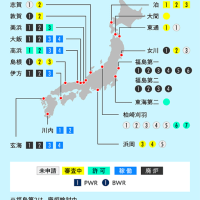

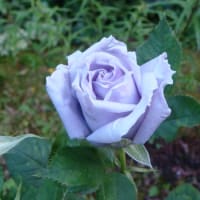
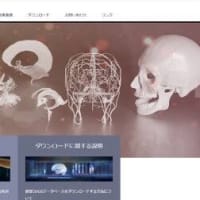
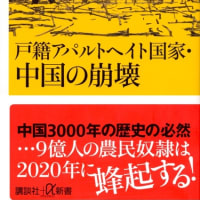
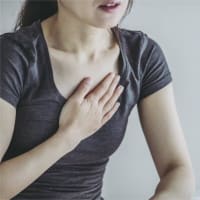
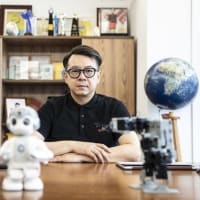

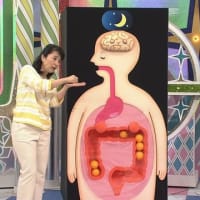
※コメント投稿者のブログIDはブログ作成者のみに通知されます